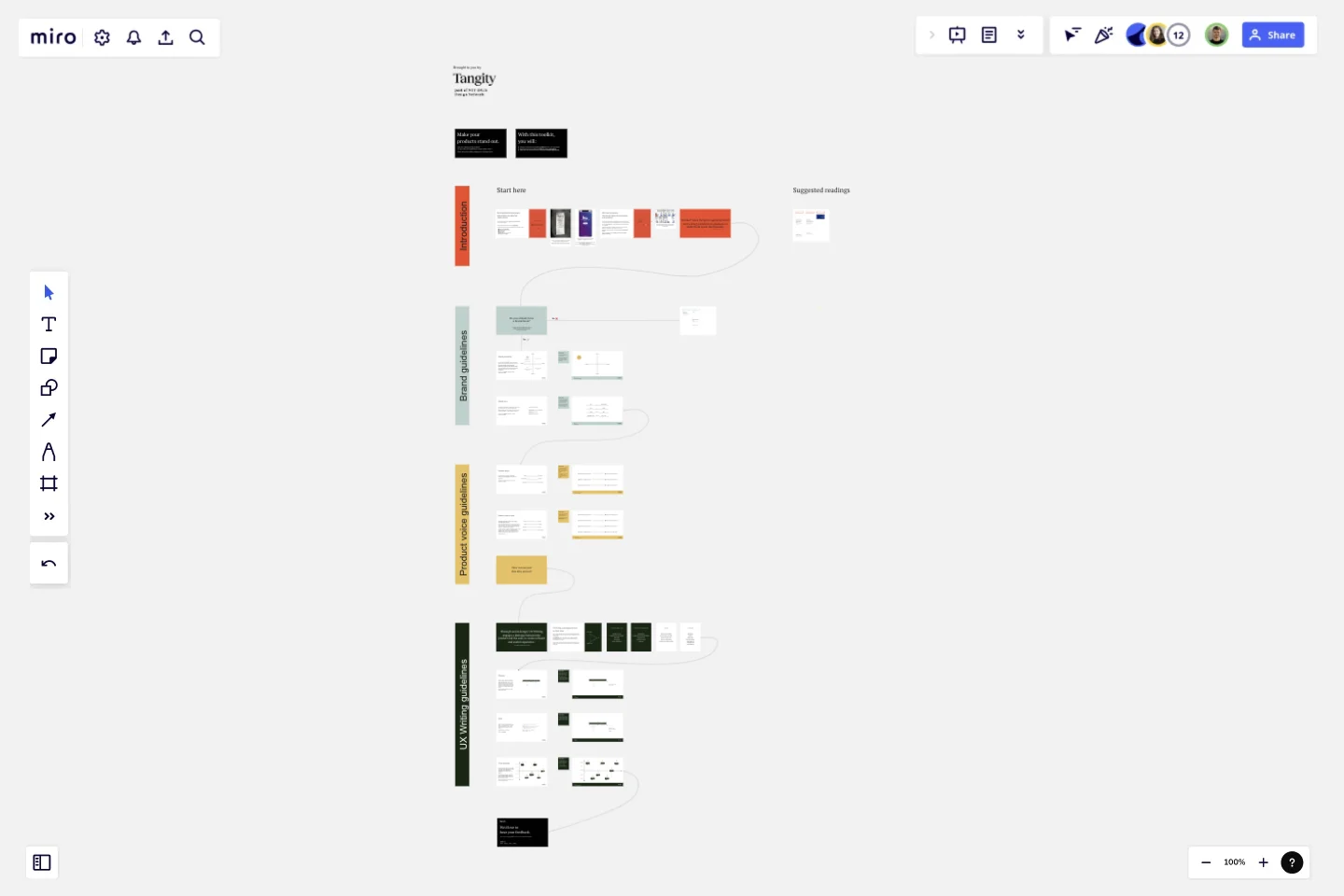Product Voice Design toolkit
The Product Voice Design toolkit features various tools that allow your team to design guidelines on how your products speak to people through written or spoken words.
It helps you establish more human relationships with your customers by creating better conversations that improve people's experience and ultimately increase brand loyalty, brand equity, and ROI.The toolkit is the result of the longstanding work in Content Strategy and UX Writing with corporate clients in Italy, during which we crafted and refined these tools to be comprehensible and useful. We wouldn't want you to waste your time creating documents that no one will read or use.
When to use our Product Voice Design toolkit?
Whether you have already established brand guidelines or not, this toolkit comes in handy when creating or redesigning a physical or digital product.Starting from your brand assessment, you will define step-by-step how your product talks and adapts to users and situations.In the end, you'll come up with clear and well-defined guidelines, including style rules and a glossary, that will help you create a coherent, memorable, and consistent experience that people will enjoy.
How does the Product Voice Design toolkit work?
We will guide you through a journey in which you'll define your product voice:
First, you'll immerse yourself in the topic thanks to a brief introduction that explains why it is essential to take care of your product voice;
Then follows the brand assessment: what is its personality? How would you define its voice?
Afterward, you will consider your specific product and its audience and see how your brand voice adapts and builds your product voice. For instance, think about how the brand voice can vary if you talk to your final customer or your employees, and how the product voice needs to consider the context and people's emotions;
Finally, you will define the rules and the glossary to help your writer deliver coherent and pleasant conversations saving time and improving quality. And now, you can start designing the entire product, down to the last detail.
This template was created by Tangity.
Get started with this template right now.
Product Strategy - Understand the "Why"
Works best for:
Product Management, Planning
The Product Strategy Understand the Why template emphasizes the importance of aligning product strategies with business objectives. By defining the "why" behind product initiatives, setting clear goals, and prioritizing initiatives, this template ensures strategic alignment and focus. With sections for articulating vision, setting objectives, and defining success criteria, it provides clarity and direction for product teams. This template serves as a strategic guide for product managers to develop and execute product strategies that drive business growth and customer value.
BCG Matrix Template
Works best for:
Strategic Planning
Use the BCG matrix template to make informed and strategic decisions about growth opportunities for your business. Assign your portfolio of products to different areas within the matrix (cash cows, dogs, question marks, stars) to prioritize where you should invest your time and money to see the best results.
Project Status Report Template
Works best for:
Project Management, Documentation, Project Planning
When a project is in motion, the project manager must keep clients and shareholders updated on the project’s progress. Rather than waste time with constant meetings, leaders can send out weekly or daily project status reports to keep everyone informed. You can use the Project Status Report Template to streamline the report creation and distribution process.
Crowd Sourced Cause and Effect
Works best for:
Fishbone Diagram, Problem solving
The Crowd Sourced Cause and Effect template leverages collective intelligence to identify root causes of problems. By involving multiple team members, you can gather diverse perspectives and uncover insights that might be overlooked. This collaborative approach ensures a comprehensive analysis and fosters team engagement.
What's on Your Radar Template
Works best for:
Business Management, Operations, Strategic Planning
Do you or your team feel overburdened by tasks? Having trouble focusing on particular problems? What’s on Your Radar is a thought exercise in which you plot ideas according to their importance or relevance. Designers and teams use what’s on your radar to ensure that their ideas are within the scope of a given project. They also rely on the method to assess whether a given solution is likely to solve the problem at hand. But even if you’re not a designer, the method can help assign priorities and ground your ideas in reality.
To-do List Template
Works best for:
Project Management, Education, Decision Making
A to-do list helps teams manage, organize, and prioritize their upcoming tasks. As a result, they can improve time management and streamline work operations. Using Miro’s to-do list template, teams create interactive, collaborative, and user-friendly task lists.
